- Home
- Michael Ondaatje
The Conversations: Walter Murch and the Art of Editing Film
The Conversations: Walter Murch and the Art of Editing Film Read online
“Harry, tell him about the time you put the bug in the parakeet.”
—The Conversation
“Film editing is a wonderful arcane art, like mosaics. I love to watch it being done, but they of course hate to be watched.”
—Donald E. Westlake
CONTENTS
INTRODUCTION
FIRST CONVERSATION
Humble Sounds • High School Confidential • “Strange Like Me” by George Lucas • Influences • Directors and Editors • Eyes Half Closed • There Is Only One First Time • The Dark Ages • “I'm not going to mix the picture upside down!” by Francis Ford Coppola • Apocalypse Then and Now • Burning Celluloid • Brando • Willard's Gaze • On Editing Actors by Walter Murch • The New Scenes • The Dead French • Apocalypse Now Redux
SECOND CONVERSATION
The Right Time for the Invention of the Wheel • Murder Music • Five Types of Ambiguity • Two Rumours • Devil's Work • Watch How They Say It • “Ka-lunk” • Novels and Films—The Redundant Abundance • The Tragedy-of-Job Moments • “Wideo” • The Non-Film Way of Living
THIRD CONVERSATION
Editing The Conversation • The Invisible Partner • The Minor Key • What's Under the Hands? • “Night Was Night”: Re-editing Touch of Evil • “As if Orson was sending us notes” by Rick Schmidlin • The Wrong Echo • The Most Characteristic Angle
FOURTH CONVERSATION
Influences • Negative Twenty Questions • Enforced Idleness • Two Kinds of Filmmaking • Why Did He Like It Better? • Family Life • The Unanticipated Collisions of Things • A Pebble, A Cricket, A Wrench • “The Blue Looked Dead” • A Wrong Reading • Divergent/Convergent • The Disappearing Brother • Preludes • A Grease Pencil and Real Time • “Waiting for Provocation” by Anthony Minghella
LAST CONVERSATION
Blessed Unrest • Writing Return to Oz • Just Below the Surface • A Wonderful Line from Rilke • Dreams
MISCELLANY
Murch and the Movies
Acknowledgements
Photo Credits
INTRODUCTION
It is hard for any person who has been on the set of a movie to believe that only one man or woman makes a film. At times a film set resembles a beehive, or daily life in Louis XIV's court—every kind of society is witnessed in action, and it seems every trade is busy at work. But as far as the public is concerned, there is always just one Sun-King who is sweepingly credited with responsibility for story, style, design, dramatic tension, taste, and even weather in connection with the finished project. When, of course, there are many hard-won professions at work.
The Conversations focusses on the art and the act of filmmaking through the lens that belongs to one of the essential talents on a film—the editor. For such a crucial craft, the editor's art has been mostly unimagined and certainly overlooked. Those within the profession know its central value, but outside that world it remains an unknown, mysterious skill—some smoke and mirrors, some touching up, some old black magic. So great names such as Dede Allen, Cécile Decugis, William Chang, Thelma Schoonmaker, Gerry Hambling, and Margaret Booth have never been a part of the public vocabulary.
Recently a friend gave me a book written some twenty years ago by Dai Vaughan on Stewart McAllister, a brilliant documentary film editor in England during World War II. It was aptly titled Portrait of an Invisible Man, and it makes a point that is still apt at the start of the twenty-first century:
McAllister's absence from the record was not entirely a consequence of indifference, carelessness or ill-will. Even those who wished to discuss the editor found themselves somehow unable to do so. There was no tradition to draw upon, no corpus of received wisdom: simply no way of talking about films which would enable the editor's work to be mentioned.
A scene with Juliette Binoche as Hana, cut from the final version of The English Patient.
The reasons for this state are legion. But Vaughan I think pinpoints the essential cause: “Underlying all debate on the subject, whether in critical journals, in Union meetings, in gossip columns or in the pub, is one master image which, even when it is not made explicit and even when it is explicitly repudiated, bends all argument by its density: the image of the Artist as solitary Creator.”
So if the emphasis in The Conversations seems at times obsessive or one-sided, it is because there is still a need to realign the balance. Walter Murch would never suggest less significance to the role of a director, but even Napoleon needed his marshals.
This book began, as all my books do, with sheer curiosity. I had met Walter Murch during the filming of The English Patient. I saw a lot of him during the months of his editing of the film, and we became friends. Walter was simply always interesting to listen to. The first time I actually sat down and talked to him about film was when his wife Muriel, aka Aggie, asked me to appear on her radio show on KPFA in Berkeley, California. I said I would be happy to, but could we make it a three-way conversation that included Walter. We talked with Aggie about our mutual crafts, and it made me want to have more conversations. Maybe at some time in the future, I thought. I had always been interested, perhaps obsessed, in that seemingly uncrossable gulf between an early draft of a book or film and a finished product. How does one make that journey from there to here? And I remembered the moment I became fascinated in the actual craft of filmmaking—as opposed to the sheer entertainment of it—when watching Dede Allen's editing in The Hustler in Lennoxville, Quebec in 1962. After The English Patient was released, Walter and I would meet up now and then, and we had lunch when I was in San Francisco on a book tour for my novel Anil's Ghost. After the meal he suggested I come back to the editing room to see what he was doing. It turned out he was beginning to recut Apocalypse Now and also assembling a seventeen-second film by Thomas Edison and William K. L. Dickson that happens to be the oldest evidence of a film married to sound. I spent two hours with him and then went back on the road. A few days later I was in Minneapolis. My novel had taken seven years to write, and I now realized that what I really wanted to do next was sit down and talk with Walter in detail about his work, and his views about the art and the making of films, and specifically about his craft of editing. I contacted him that night, proposed the idea, he agreed, and we began a couple of months later.
The Conversations is made up of talks that took place during our meetings over the next year, starting in July 2000. We met whenever and wherever we could. Walter always surprised me with his ideas. George Lucas says he was originally drawn to Walter because he was “strange like me.” My favourite lines in this book come where Walter remembers an incident that led to a technical solution for a film he was working on: “For some reason I had put the recorder at one end of the African Hall, and stood at the other end and just shouted incomprehensible, guttural speech. It echoed in a beautiful way and it was recorded.” But there is nothing in the words of his recall of the incident to suggest this might be slightly abnormal behaviour, especially as he admits it took place very late at night.
The other quality that made me lucky in this project is that Walter has simply been in interesting places. He has worked on projects that have become central to the culture of our time. And speaking of these works, he describes the precise techniques used to solve a problem or to improve a moment, as opposed to discussing abstract theories and themes. Most of all, Walter is a filmmaker whose interests are in no way limited to film. There are very few in Hollywood who could speak of Beethoven and bees and Rupert Sheldrake and astronomy and Guido d'Arezzo with such knowledge. In fact it soon became clear that the
one weak link in Walter's knowledge was film history. “I don't know enough about film history” is not a modest remark but a truthful one.
On one of my first visits, Walter and I were driving the curving road towards San Francisco when he glanced down at the odometer and said, “This car has almost reached the moon.” What? “The distance to the moon is 238,713 miles, this car has gone 238,127. And most of it has been on this winding road.”
Walter is a man whose brain is always peering over the wall into the worlds of scientific knowledge and metaphysical speculation. The book on his table is likely to be Our Place in the Cosmos by Hoyle and Wickramasinghe. For years he has campaigned to revive the discredited theories of the eighteenth-century astronomer Johannes Bode. I first heard of Bode during the making of The English Patient. Half of Walter's computer held all the information he had collected on The English Patient, peculiar data that provided an X ray of the movie in progress: at the push of a button he could show that Hana had seventy-six minutes on film, the Patient fifty-four, Kip thirteen. But the other half was filled with notes and planetary maps about Bode's theories.
He is a true oddity in the world of film. A genuine Renaissance man who appears wise and private at the centre of various temporary storms to do with filmmaking and his whole generation of filmmakers. He has worked on the sound and/or picture editing of such films as American Graffiti, The Conversation, The Godfather (Parts I, II, and III), Julia, Apocalypse Now, The Unbearable Lightness of Being, Ghost, and The English Patient. Four years ago he recut Touch of Evil, following Orson Welles's ignored fifty-eight-page memo to Universal. He has written and directed Return to Oz, an ambitious sequel to The Wizard of Oz. He has written In the Blink of an Eye, a sort of “Zen and the Art of Editing,” as pertinent for writers and readers as it is for filmmakers and audiences.
But he is a man who also lives outside the world of film, the son of an artist whose theories and attitudes on art have deeply influenced him. He can sit at the piano and play “the music of the spheres,” based on the distance of the planets from one another, translated by him into musical chords. And in recent years he has been translating the writings of Curzio Malaparte. He doesn't like to watch other movies when he is working on one himself, as he is ninety percent of the year. And he doesn't watch television, ever.
He is a low-key, gliding presence in a crowded and noisy room. He has a pair of ears that can pick up the hint of hum on a soundtrack, hiding within a twenty-track scene made up of gunfire, burning napalm, shouted orders, and helicopters. In the editing rooms of Francis Coppola's Zoetrope Studio, or the Saul Zaentz Film Center, he stands in front of an Avid editing machine, fine-tuning a cut that will eventually seem fluid but which is in reality a radical jump cut. He will turn to the self-invented coded charts on his wall and read the dramatic bones of the film he is working on. Yellow for this character's presence, blue for a certain location—“Venice” or “desert” or “Italian restaurant”—now and then a diagonal card for a scene that is a turning point in the story: the “mirror” scene in Ripley, the “first dance” in The English Patient. In this way, as editor, he can gaze down along the path of the narrative as if it were an easily understood steeplechase or the Tour de France. And from this perspective he deals with the crucial questions and possibilities an editor has to ask at some time or another: Can we eliminate that detour to the oasis scene completely? Can we leap the next three minutes and nestle this moment with that moment, thereby bonding two scenes that are strangers?
The more important considerations come with the subtler problems. How to eliminate that slightly superior tone that has emerged in the central character, how to avoid a series of plot bottlenecks later, how to influence or “save” a scene in the fifty-third minute of the film by doing something very small in the seventh, how to double the tension by doubling the sense of silence or not cutting away to that knife at all. How, even, to disguise the fact that an essential scene was never shot. To watch Murch at work is to see him delve into almost invisible specifics, where he harnesses and moves the bones or arteries of a scene, relocating them so they will alter the look of the features above the skin. Most of the work he does is going to affect us subliminally. There is no showing off here. We tend not to discover how his devices are working on us. I remember seeing the film of The English Patient for the first time after he had mixed it. Itold him that I had heard a distant bell at the moment the Patient ate a plum. Aha, he said, quite pleased at my picking this up. Yes, we had put in the sound of a bell some distance away, about half a mile. It was to hint at a memory opening up. The Patient as he eats his plum begins to remember (in fact his first flashback comes a minute later). The bell we now hear signals the past for him; it takes over from the plum's taste as the catalyst of that memory. Walter then also pointed out that the bell, hardly even heard by audiences, is the first positive sound of human civilization up to that point fifteen minutes into the film. Till then the only man-made sounds are of bombs and machine guns and crashing planes and trains. It is in this way that much of the real editorial influence on the audience in a film such as The English Patient is subliminal. I would also notice that after the mix many of the visual cuts from location to location were slightly foreshadowed by a sound cut: we could now hear the noise of sandpaper on stone, for instance, before we cut visually to the archaeologists in the desert, or there would be the soft clang of the metal spile Hana throws as a hopscotch token, evolving into the sound of Berber music, thus preparing us for a leap back in memory.
This is, of course, the kind of craft that any careful writer uses as he or she edits a novel, or the craft a record producer counts on to shape an album with a hundred small details in the last stages. It is not just the editing of the individual scene that Murch is dealing with, but the more crucial larger structure: the issue of a film's pace, of the film's moral tone, which are influenced by a thousand fragments that have to do with speed, background noise, even how the antagonist may turn away from a conversation, or even, more deviously, how quickly the editor makes us cut away from that character's remark. This is from In the Blink of an Eye:
For instance, by cutting away from a certain character before he finishes speaking, I might encourage the audience to think only about the face value of what he said. On the other hand, if I linger on the character after he finishes speaking, I allow the audience to see, from the expression in his eyes, that he is probably not telling the truth, and they will think differently about him and what he said. But since it takes a certain amount of time to make that observation, I cannot cut away from the character too early…. I hold until the audience realizes he is lying.
Watching Murch edit a scene between Willem Dafoe and Juliette Binoche— the summer after The English Patient shoot—I saw how he would remove onefifth of the information and “bank” it, so extending the hook of this scene's unspoken knowledge to a later point in the film. When I saw Washington Square—a film Murch had nothing to do with—I understood what he was up to. In that film the edit was so competent, the scenes so articulate and so fully expressed, that every episode was complete in itself. The film progressed in a series of well-made, self-sufficient moments, and so it felt as if there was a wall between every perfectly articulated scene.
At some stage Walter might take a scene and turn it upside down and shake it to see how essential it is. Sometimes he becomes perversely obsessed with the rightness of removal. The director Anthony Minghella talks of how he was away from the editing room for a few days and came back to find Walter had removed the key dance scene between Almásy and Katharine Clifton, now convinced it was not at all necessary. But while the scene was eventually re-installed, the shock of discussion and threat of edit tightened it and made it even stronger later on.
There were times when Walter would show us a scene that appeared perfectly edited and crafted—the love scene between Almásy and Katharine during the Christmas party—and then return a few days later with a magical addition. In that cas
e it was the use of a remade soundtrack that capsized the sounds of the good-natured Christmas spirit outside their room; he had added the noise of jostled furniture, the hint of bridles, and other sounds that made the scene dangerous. He had made the soundtrack a debate between a passionate private music and the carol-singing, social world close by. Murch and Minghella have a tremendous knowledge of music that helped govern the rhythm and shape of their film. And both were remarkably articulate, both able to argue their way out of suitcases. (Compared with them, the producer Saul Zaentz and I were the kind of people who would upset the Monopoly board in fury and stalk off, refusing to play by the rules of conversation anymore.)
Henry Green has called prose “a long intimacy,” and it is a phrase that aptly describes the work of an editor, who might spend hours studying and aligning a small gesture in an actor; who knows actors—though they often do not know him—in such detail and intricacy that he even knows how to use their bad moments to benefit a performance. In our conversation with Aggie, Walter had talked about the editor's recognition of these subliminal signs: “For instance, some actors might turn their head to the left before they say the word ‘but' or blink seven times a minute when they're thinking hard…. You learn all these things, and they're important. They're as important to you as signs in the forest are important to a hunter. Where were the deer? Is this a trail? What does this bent twig mean? All these things become tremendously significant. You have to find things that are good that work with the film…. By the same token, you begin to realize that if you put something weak in the right place, it can actually be very compelling. There are a number of times that I've used shots of actors trying to remember their lines. It's a very honest emotion. They are embarrassed, they're confused, they hope they remember the line, and you can see all of this on their face. In a certain context, that's absolutely the wrong thing to use. But placed in a different context, it can be wonderful and magical.”

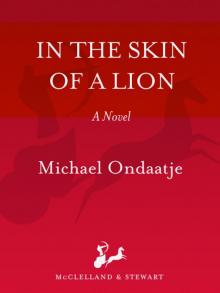 In the Skin of a Lion
In the Skin of a Lion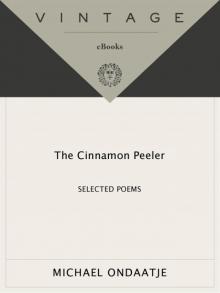 The Cinnamon Peeler
The Cinnamon Peeler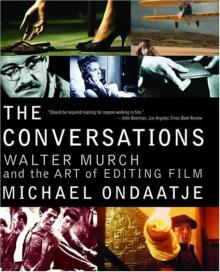 The Conversations: Walter Murch and the Art of Editing Film
The Conversations: Walter Murch and the Art of Editing Film Anil's Ghost
Anil's Ghost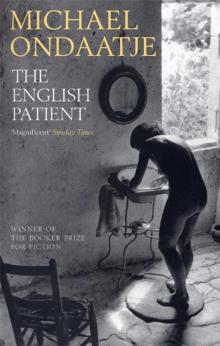 The English Patient
The English Patient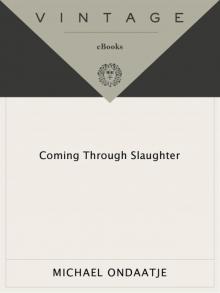 Coming Through Slaughter
Coming Through Slaughter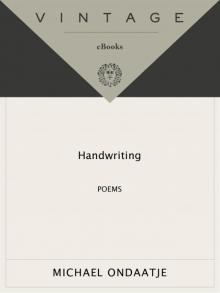 Handwriting
Handwriting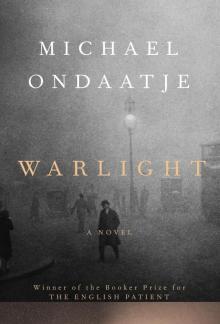 Warlight
Warlight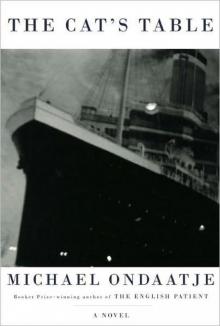 The Cat's Table
The Cat's Table Running in the Family
Running in the Family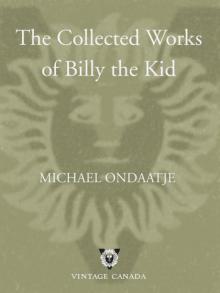 The Collected Works of Billy the Kid
The Collected Works of Billy the Kid Divisadero
Divisadero